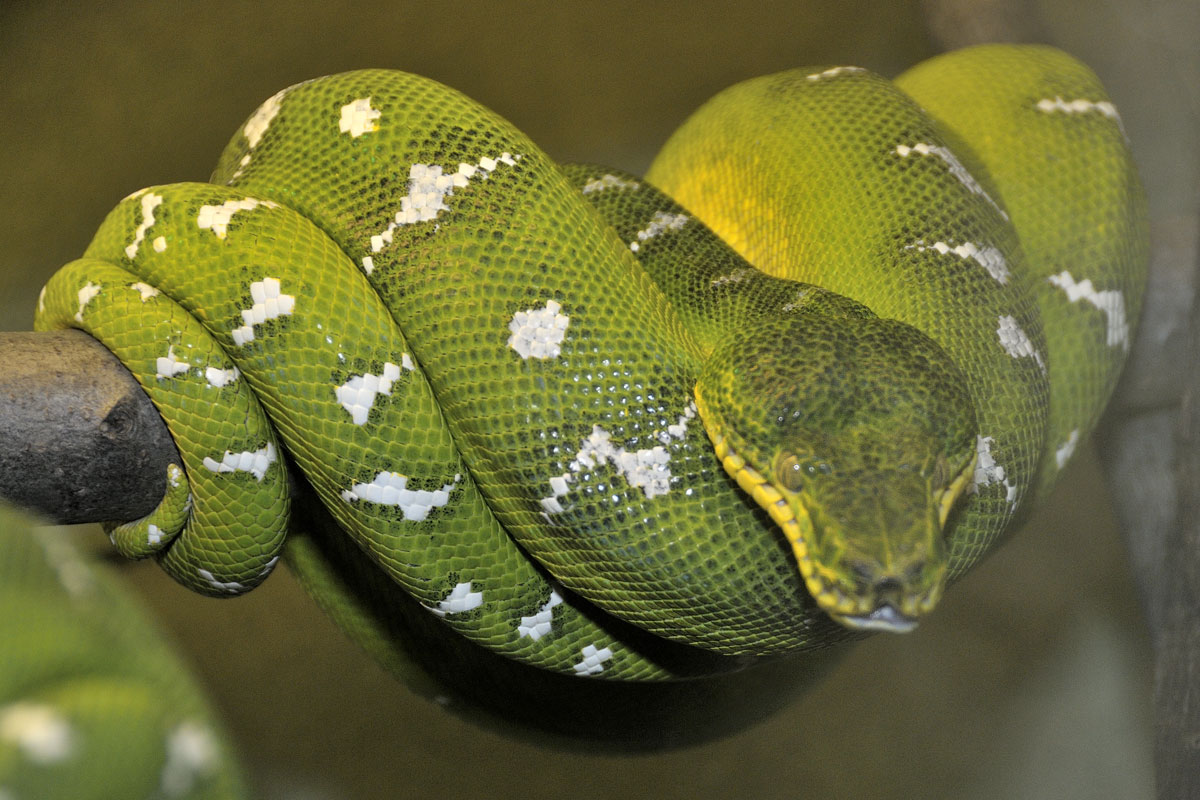Alerts
Please be advised that our bird aviaries are open!
Your Toronto Zoo is committed to the health and safety of the animals in our care. We take proactive steps to protect our birds from Avian Influenza which has been confirmed in a wild bird in southern Ontario, and some birds may still be off display.
Please note Splash Island is still closed and will not open until July due to unforeseen delays in construction. Please watch for updates on https://www.torontozoo.com/tz/splash or on our social media pages. Thank you!
Please note the following animals are currently not on display due to various reasons including Avian Bird Flu, and Covid-19 sensitivity:
- Flamingo, peacock, owl, bald eagle, and aviaries
- Some Kids Zoo Animals
- Cougar
- Moose
- Kangaroo walk through (kangaroos are still visible)
- Axolotl
We apologize for the inconvenience!


Reptile
Location at the Zoo:
Australasia
Region: South America
Emerald tree boa
There is much variation in colour and pattern in the emerald tree boa, particularly in juveniles, according to their region. Newborns may be red or orange or a mix of red and orange or red, orange, and green. The adult specimen is a striking green with white blotches along the dorsal midline. The emerald tree boa is characterized by large, distinctive labial heat receptors. These infrared heat receptors are located in the labial scales. These heat pits run along both the upper and lower lips. The head is large and obviously separate from the neck. The average adult length is 1.8 meters but again there are variations according to region. The body is typically five cm in diameter.Conservation Status: IUCN

Distribution:
Found in Columbia, Venezuela, Brazil, Ecuador, Peru, Bolivia, French Guinea, Guyana, and Surinam.Habitat:
Found in mature forested areas. They are found from sea level to altitudes of 800 meters.Diet:
This boa's diet consists mostly of small mammals, such as rats, bats, and possums, but also includes birds and lizards.Reproduction:
Emerald boas are ovoviviparous (live birth). They have up to twenty young at a time, who are born up to 30 cm long. Young emerald tree boas begin to turn green after 10 to 12 months. These snakes take one or two years longer to reach sexual maturity than other boids.Adaptation:
This is an arboreal and nocturnal species. Days are spent coiled in a tree branch with its head at the centre of the coil. At night this position is adjusted by extending the head downward in preparation for a strike. It holds this position waiting and watching for prey to approach from below or birds to alight nearby. As ambush predators their well-developed labial heat receptors allow them to see any heat emitting from approaching animals. Prey is grasped with the long frontal teeth, pulled in and constricted to asphyxiation.Emeralds have the smallest angle of maxillary teeth to the maxilla bone than any other boid. This means the teeth are pointed more sharply backward. After striking their prey they have an extra advantage in that the teeth will be more deeply embedded as the animal tries to pull free, lessening the chance of escape. The tail is prehensile, giving a secure hold on the branch after they strike their prey.
The neonatal emerald colour variations may be mimicking the multi-coloured vipers of the same regions. After the juvenile takes on the mature colouration, it then depends on camouflage as a defense.